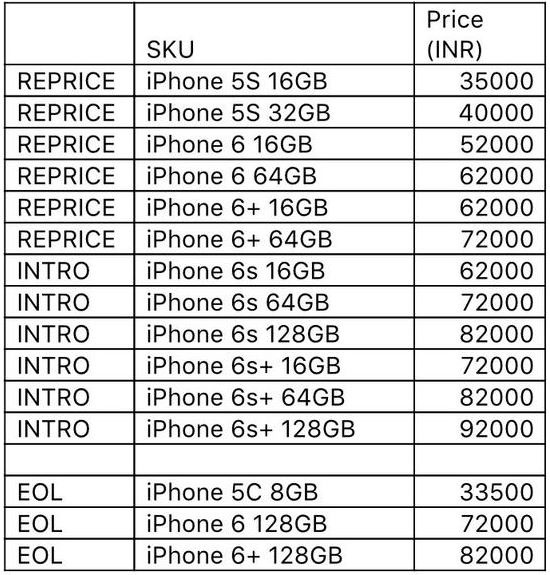When examining the iPhone 6s cost, it’s fascinating to delve into how Apple manages to maintain competitive pricing while integrating advanced technology. Recent analysis indicates that the production cost of the iPhone 6s remains comparable to older models, with a significant portion of the $234 allocated to essential components. This breakdown reveals intriguing aspects of the assembly cost and component pricing, highlighting Apple’s efficiency in production. With innovations like 3D Touch and a faster A9 processor, one might expect higher costs, yet Apple has found a way to balance these expenses. This ability to control the iPhone 6s production cost showcases Apple’s strategic thinking in the smartphone market while ensuring consumers receive a powerful device at a reasonable price.
Analyzing the financial aspects of the Apple iPhone 6s reveals a complex interplay between manufacturing expenses and retail pricing strategies. The cost to build the iPhone 6s serves as a testament to Apple’s ability to innovate without dramatically increasing expenses. Exploring terms like iPhone 6s assembly cost and the cost breakdown of various components provides deeper insights into how each element contributes to the final product price. Even with an enhanced feature set, Apple has managed to use its supply chain expertise effectively, crafting a device that appeals to both consumers and investors alike. Understanding the intricacies of Apple’s pricing model opens up discussions about the future of mobile technology and consumer expectations.
Understanding iPhone 6s Production Cost
The production cost for the iPhone 6s has been analyzed and reported to be around $234, which is surprising given the device’s advanced features such as 3D Touch and a powerful A9 processor. This cost is quite similar to that of previous models, indicating that Apple has managed to streamline its manufacturing processes effectively. By leveraging economies of scale and optimizing their supply chain, Apple continues to minimize production expenses while enhancing product quality. Key components contributing to this production cost include semiconductors, various cellular radios, and flash memory, which are vital for the iPhone’s performance.
By examining the cost breakdown of the components, we can see how Apple strategically selects parts that provide the highest value for money. For instance, the cost of semiconductors alone is $127, accounting for a significant portion of the total production cost. This careful selection process, combined with Apple’s expertise in manufacturing and assembly, allows them to produce the iPhone 6s at a competitive price while delivering remarkable performance and features that attract consumers.
The Cost to Build iPhone 6s: A Detailed Breakdown
When analyzing the cost to build the iPhone 6s, it is essential to look at each component’s price. The assembly cost, which Apple pays to Foxconn, ranges between $8 and $11, contributing to the overall expenses. Additionally, the components themselves—such as the $25 A9 processor and $20 for the 64GB flash memory—are crucial in determining the final cost. The total estimated price has been projected to be around $250, reflecting a slight increase compared to its predecessor, the iPhone 6. This highlights how Apple can absorb additional costs through strategic sourcing and efficient assembly.
Moreover, Apple’s transparent pricing strategy indicates that while consumers pay a retail price of $749 for an unlocked 64GB iPhone 6s, the massive difference between this price and the estimated building cost isn’t simply profit. With expenses related to marketing, distribution, and after-sales support factored in, the difference helps sustain Apple’s broad ecosystem and customer service initiatives, ensuring continued consumer loyalty.
Apple iPhone Price Analysis: What Consumers Need to Know
The price of the iPhone 6s has sparked discussions regarding its value in today’s competitive smartphone market. At an initial retail price of $749 for the 64GB variant, consumers often question whether the features justify this cost. Apple’s strategic pricing reflects not just the production costs but also brand perception, technological advancement, and market positioning. The added functionalities, including enhanced camera capabilities and new sensors like NFC and fingerprint recognition, create a compelling case for potential buyers.
From an analytical perspective, understanding the cost structure behind Apple’s pricing can provide insights for consumers. The $234 production cost, coupled with additional marketing, distribution, and operational expenses, implies that Apple’s pricing is calculated to maintain high profit margins while ensuring product innovation. Therefore, while the iPhone 6s comes with a premium price tag, the sophisticated technology and superior build quality are factors many consumers find worth the investment.
Assessing iPhone Components Cost Breakdown
A thorough understanding of the iPhone components cost breakdown offers valuable insight into the overall production strategy employed by Apple. The most significant costs are associated with critical components that directly impact the phone’s performance and user experience. For instance, the semiconductors, priced at $127, play a crucial role in the device’s operational efficiency. Moreover, other components such as the high-quality screen, camera, and battery further enhance the functionality of the iPhone 6s.
Additionally, as technology advances, the demand for more sophisticated components increases. Apple’s ability to source and integrate these high-cost components while maintaining competitive pricing is a testament to their operational efficiency and industry expertise. By keeping the cost of assembly, distribution, and other expenses in check, Apple can provide high-end devices like the iPhone 6s without significant price hikes, thereby retaining customer interest and market share.
The Importance of Assembly Cost in iPhone Production
Assembly cost plays a pivotal role in the overall expense of producing the iPhone 6s. Apple relies on partnerships with manufacturers like Foxconn, which charge between $8 and $11 for assembly and testing. This cost, while seemingly small relative to the total production cost, accumulates across the mass production of millions of units. It is an essential factor for Apple when calculating the overall cost structure of the iPhone 6s.
Understanding assembly costs helps consumers appreciate the economic complexities involved in smartphone production. While materials and hardware represent a significant portion of the cost, labor and assembly processes are critical for ensuring that each device meets Apple’s stringent quality standards. This balance between cost control and quality assurance is a hallmark of Apple’s manufacturing philosophy, contributing to the reliable and high-quality reputation of its products.
Why iPhone 6s is Worth Its Price Tag
Despite the hefty price tag associated with the iPhone 6s, many argue that its value is justified. With a robust set of features like a faster processor, enhanced camera capabilities, and innovative 3D Touch technology, the device provides users with high performance suited for modern needs. As consumers increasingly rely on mobile technology for a variety of tasks, the investment in a premium smartphone becomes more palatable when considering longevity and performance.
In addition to the cutting-edge technology, Apple’s ecosystem plays a crucial role in maintaining its pricing strategy. Consistency in software updates, customer support, and integration with other Apple devices enrich the user experience, making it worth the investment. As consumers evaluate their options, it’s crucial to consider not just the immediate cost but the long-term benefits of owning an iPhone 6s.
The Impact of Production Costs on iPhone 6s Pricing
Production costs have a direct impact on the pricing strategies adopted by Apple for the iPhone 6s. The estimated cost of components—approximately $234—plays an essential role in determining the retail price of $749. This pricing strategy reflects the brand’s positioning as a premium product provider, which, in turn, attracts a consumer base willing to pay more for perceived value and quality.
Moreover, as production costs fluctuate—due to factors such as material costs and assembly expenses—Apple frequently reassesses its pricing strategy. By managing these costs effectively, Apple can ensure that it remains competitive in the smartphone market while still making a substantial profit. Ultimately, understanding how these production costs influence the final price can provide consumers with insights into the value they receive for their investment.
Factors Influencing iPhone’s Components Cost
Several factors influence the cost of components used in the production of the iPhone 6s. Fluctuations in global supply and demand, advancements in technology, and shifts in the political landscape of supplier countries can all impact pricing. For instance, the semiconductor costs, which account for a significant portion of the total production, are often susceptible to shortages and increased demand in the tech industry.
Additionally, Apple’s strategic sourcing practices allow it to build long-term relationships with suppliers, which can help mitigate cost increases. By collaborating closely with manufacturers, Apple ensures that it secures components at competitive prices, ultimately impacting the overall cost and quality of the iPhone 6s. This proactive approach aids in maintaining a balance between cost management and product excellence.
Evaluating the Overall Value of the iPhone 6s
When considering whether the iPhone 6s is worth its price, evaluating its overall value is essential. With a production cost estimated at around $250, Apple’s retail price of $749 includes not just the cost of materials and assembly but also factors like software development, marketing, and after-sales service. This broader perspective helps consumers understand that the price encompasses more than just the physical components of the device.
Furthermore, long-term usability and customer satisfaction are critical when measuring value. The seamless integration of hardware and software that Apple is known for enhances the user experience, often justifying the initial investment. Consumers who prioritize quality, performance, and customer support are likely to find the iPhone 6s a worthy addition to their tech portfolio.
Frequently Asked Questions
What is the iPhone 6s production cost for Apple?
The production cost of the iPhone 6s for Apple is approximately $234, which includes various components such as semiconductors, cellular radios, and memory.
How does Apple manage the iPhone 6s cost despite advanced features?
Apple manages the iPhone 6s cost effectively by keeping component prices stable, allowing them to integrate new features like 3D Touch while maintaining a similar overall production cost compared to their previous models.
What is the breakdown of iPhone 6s components cost?
The iPhone 6s components cost breakdown includes $127 for semiconductors, $36 for cellular radios, $20 for 64GB flash memory, $25 for the A9 processor, and $22 for various sensors, among other costs.
What are the assembly costs in the total cost to build iPhone 6s?
The cost to build iPhone 6s includes assembly costs ranging between $8 and $11 paid to Foxconn Technology for testing and assembly, which is part of the overall production expenses.
How much does Apple retail the unlocked 64GB iPhone 6s for?
The retail price for an unlocked 64GB iPhone 6s is around $749, which is significantly higher than the estimated production cost due to additional expenses like manufacturing and marketing.
What are the significant factors affecting the Apple iPhone price analysis?
Key factors affecting the Apple iPhone price analysis include component costs, assembly expenses, distribution, marketing promotions, and the overall strategic pricing by Apple to maintain brand value.
Is the iPhone 6s assembly cost significantly different from its production cost?
Yes, the iPhone 6s assembly cost is a small fraction of the total production cost, with an assembly cost of around $8 to $11 contributing to the overall production expense of approximately $250.
How does the iPhone 6s cost compare to the iPhone 6?
The iPhone 6s cost is estimated to be around $250, which is $20 more than the production cost of the iPhone 6, reflecting the enhancements and new features in the newer model.
| Component | Cost ($) |
|---|---|
| Semiconductors | 127 |
| Cellular Radios | 36 |
| 64GB Flash Memory | 20 |
| A9 Processor | 25 |
| Sensors (NFC, fingerprint, etc.) | 22 |
| Screen, Camera, Battery | 73 |
| Phone Case | 33 |
Summary
The iPhone 6s cost reflects Apple’s innovative yet cost-effective approach to smartphone manufacturing. Despite the introduction of advanced features and components, the production cost for the iPhone 6s remains comparable to its predecessor at approximately $234. This efficient cost management is crucial as the unlocked 64GB version retails for $749, highlighting the significant margin that Apple maintains. Overall, the iPhone 6s demonstrates a blend of cutting-edge technology and strategic pricing, ensuring Apple’s competitive position in the market.








